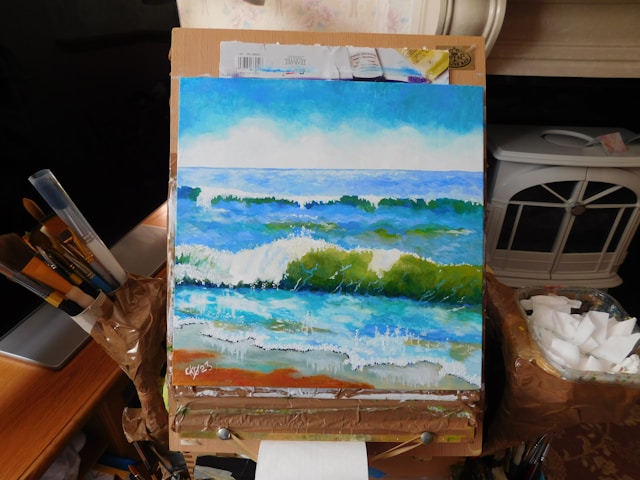
6 Tips to Make Paint Last on Canvas
Ensuring the longevity of your paintings is important for preserving your artistic legacy. Whether you are an amateur or a professional painter, taking steps to make your paint last on canvas is essential. Here are six tips that will help you achieve lasting results.
1. Use High-Quality Materials
The foundation of a long-lasting painting lies in the quality of materials used. High-quality paints, canvases, and primers are specifically formulated to withstand the test of time, preventing premature damage.
Tip:
Invest in artist-grade paints and canvases. Vincent van Gogh, known for his vivid and enduring works, meticulously chose his materials. By choosing high-quality, lightfast paints, Van Gogh ensured that his colors would remain vibrant over the years. Artist-grade materials contain higher pigment concentrations and superior binders, contributing to their durability.
2. Properly Prime Your Canvas
Priming the canvas creates a smooth, even surface that helps the paint adhere better. It also prevents the paint from seeping into the canvas fibers, which can cause deterioration.
Learn how to prime a canvas here.
Tip:
CanvasLot offers canvases which are double-primed with acid-free acrylic gesso so yoou can start painting without worrying about priming.
3. Use Archival Varnish
Varnish acts as a protective layer, shielding your painting from dust, UV rays, and environmental pollutants. It also enhances the colors and adds a professional finish to your work.
Tip:
After your painting is completely dry, apply an archival-quality varnish. An archival varnish can be removable, allowing for future conservation efforts without damaging the original paint layer.

4. Control the Environment
Environmental factors such as humidity, temperature fluctuations, and exposure to sunlight can cause paint to crack, fade, or deteriorate.
Abstract expressionist Jackson Pollock was aware of the impact of environmental conditions on his drip paintings. By keeping his works in a stable environment, Pollock minimized the risk of damage.
Tip:
Store and display your paintings in a controlled environment. Aim to maintain consistent humidity and temperature levels and avoid direct sunlight.
5. Practice Proper Storage Techniques
How you store your paintings when they are not on display is crucial for their longevity. Improper storage can lead to physical damage, warping, and mold growth.
Tip:
Store your paintings upright in a cool, dry place. Use acid-free materials to separate them and prevent contact with harmful substances.
6. Handle with Care
Improper handling can lead to physical damage such as scratches, dents, or tears. Handling paintings with care is vital to maintaining their condition.
Tip:
Always handle paintings with clean hands or wear gloves. Use both hands to support the artwork, avoiding touching the painted surface. By being mindful of handling techniques, you can prevent accidental damage and preserve your paintings for future generations.
Know our expert tips on caring for your canvases here.
Making paint last on canvas involves a combination of using high-quality materials, proper preparation, and diligent care. By following these tips and learning from the practices of successful artists, you can ensure the longevity of your artwork and preserve your creative legacy for years to come.